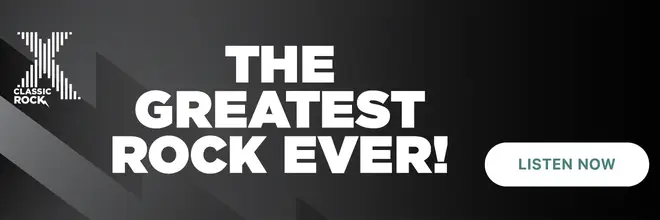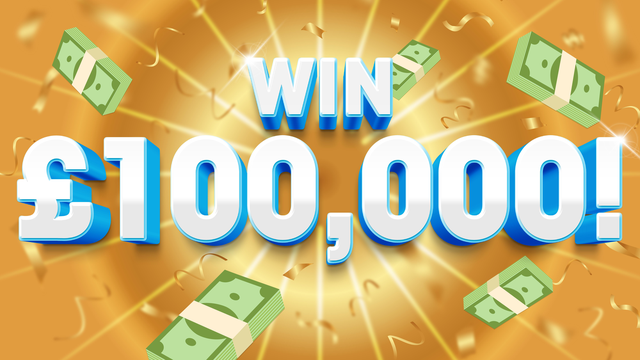The 25 best Classic Rock albums of 1969
31 May 2024, 17:34 | Updated: 16 July 2024, 19:03

Let's take a look back to the dying days of the 60s with great albums from Led Zeppelin, David Bowie, The Beatles, The Rolling Stones, Pink Floyd and many more...

Listen to this article
-
The MC5 - Kick Out The Jams: release date February 1969
Recorded live over two nights at Detroit's Grande Ballroom, this was one of the key albums in the development of punk: the MC5's cover of Ramblin' Rose was an influence on Primal Scream... and the raucous title track is preceded by singer Rob Tyner yelling "Kick out the jams, motherf**kers!"
The MC5 - Kick Out The Jams cover art. Picture: Alamy -
Cream - Goodbye: release date 5th February 1969
The trio of Eric Clapton, Jack Bruce and Ginger Baker issued their fourth and final album, which included the track Badge, written by Clapton and George Harrison. The trio had played their final show together at the Royal Albert Hall the previous November.
Cream - Goodbye cover art. Picture: Alamy -
The Velvet Underground - The Velvet Underground: release date March 1969
John Cale had left the iconic New York art rock band to be replaced by Doug Yule and while it wasn't as successful as the first two albums, this third outing included such classics as Candy Says, What Goes On and Pale Blue Eyes.
The Velvet Underground - The Velvet Underground cover art. Picture: Press -
Bob Dylan - Nashville Skyline: release date 9th April 1969
The singer-songwriter's ninth album saw him embrace country music and included the singles I Threw It All Away and Lay Lady Lay.
Bob Dylan - Nashville Skyline cover art. Picture: Alamy -
Joe Cocker - With A Little Help From My Friends: release date 23rd April 1969
Cocker had enjoyed a huge Number 1 hit with his cover of the Beatles tune in October 1968, and the follow-up album included covers of Just Like A Woman and I Shall Be Released by Bob Dylan, plus Traffic's Feeling Alright.
Joe Cocker - With A Little Help From My Friends album cover. Picture: Press -
Chicago Transit Authority - Chicago Transit Authority: release date 28th April 1969
Later to shorten their name to simply "Chicago" and become soft rock megastars, this was their debut album and included Questions 67 And 68, Beginnings and Does Anybody Really Know What Time It Is?
Chicago Transit Authority - Chicago Transit Authority cover art. Picture: Alamy -
Neil Young - Everybody Knows This Is Nowhere: release date 14th May 1969
Young's second solo album included Cinnamon Girl, Down By The River and Cowgirl In The Sand.
Neil Young - Everybody Knows This Is Nowhere album cover. Picture: Alamy -
The Who - Tommy: release date 19th May 1969
The British mod band's first rock opera was the ambitious tale of the dissociative hero who becomes a pinball legend and youth leader. Classic tracks include Pinball Wizard and I'm Free, along with the anthemic We're Not Gonna Take It.
The Who - Tommy cover art. Picture: Alamy -
Crosby Stills & Nash - Crosby Stills & Nash: release date 29th May 1969
The debut album from former Byrd David Crosby, ex-Buffalo Springfield man Stephen Still and former Hollies member Graham Nash. Their debut includes Suite: Judy Blue Eyes and Marrakesh Express.
Crosby Stills & Nash - Crosby Stills & Nash cover art. Picture: Alamy -
Captain Beefheart & His Magic Band - Trout Mask Replica: release date 10th June 1969
A hugely influential album from Don Ban Vliet, the experimental blues rock had fans in future stars such as Tom Waits, John Lydon and PJ Harvey.
Captain Beefheart & His Magic Band - Trout Mask Replica cover art. Picture: Alamy -
The Doors - The Soft Parade: release date 18th July 1969
The LA psychedelic rockers attracted some criticism for their use of brass and string arrangements on their fourth album, but it spawned the its Touch Me, Wishful Sinful and Tell All The People.
The Doors - The Soft Parade cover art. Picture: Alamy -
Yes - Yes: release date 25th July 1969
The British prog rock giants released their debut album this year: alongsie the singles Sweetness and Looking About were covers of I See You by The Byrds and The Beatles' Every Little Thing.
Yes - Yes cover art. Picture: Press -
Jethro Tull - Stand Up: release date 25th July 1969
Despite the single Living In The Past making Number 3 in the UK charts, the track wasn't included on Tull's second album, but the instrumental Bourée was.
Jethro Tull - original vinyl album cover - Stand Up. Picture: Alamy -
Creedence Clearwater Revival - Green River: release date 7th August 1969
The third album from the Californian roots rockers led by John Fogerty included their most famous song, Bad Moon Rising.
Creedence Clearwater Revival - Green River cover art. Picture: Alamy -
The Stooges - The Stooges: release date 5th August 1969
The Michigan band's debut was produced by Velvet Underground man John Cale and made singer Iggy Pop the Godfather of Punk with its primitive but energetic garage rock tunes such as 1969, I Wanna Be Your Dog and No Fun (later covered by the Sex Pistols).
The Stooges - The Stooges cover art. Picture: Alamy -
Janis Joplin - I Got Dem Ol' Kozmic Blues Again Mama! Release date 11th September 1969
Joplin played her final show with Big Brother & The Holding Company in San Francisco on 1st December 1968 and then went on to forge a solo career with her new group, the Kozmic Blues Band. Her solo debut included a cover of the Bee Gees' To Love Somebody and Try (Just A Little Bit Harder). Her second and final solo album, Pearl, would be released three months after her untimely death on 4th October 1970.
Janis Joplin - I Got Dem Ol' Kozmic Blues Again Mama cover art. Picture: Alamy -
The Band - The Band: release date 22nd September 1969
The second album of Americana from Bob Dylan's sometime colleagues included Rag Mama Rag and The Night They Drove Old Dixie Down.
The Band - The Band cover art. Picture: Alamy -
The Beatles - Abbey Road: release date 26th September 1969
The final album to be recorded by the Fab Four as John Lennon quit the band around the time of its release and the unreleased Let It Be material from the star of 1969 would be shelved and issued the following year. This polished album included Come Together, Something, Here Comes The Sun and the excellent "Side Two Medley" which brings the curtain down on The Beatles' impeccable career.
The Beatles - Abbey Road cover art. Picture: Alamy -
The Kinks - Arthur (Or The Decline And Fall Of The British Empire: release date 10th October 1969
The seventh album by Ray Davies and co was a concept album about the Davies brothers' older sister, who emigrated to Australia. Singles included Shangri-La and Victoria.
The Kinks - Arthur (Or The Decline And Fall Of The British Empire cover art. Picture: Alamy -
King Crimson - In The Court Of The Crimson King: release date 10th October 1969
The British progressive rock band - featuring bassist Greg Lake and guitar genius Robert Fripp - released their debut album, which included one of their best-known songs, 21st Century Schizoid Man.
King Crimson - In The Court Of The Crimson King cover art. Picture: Alamy -
Led Zeppelin - Led Zeppelin II: release date 22nd October 1969
The British supergroup issued their debut album at the start of '69, but it was the follow-up later in the year that trumped its predecessor in perfecting the heavy rock style. Opening with the orgasmic Whole Lotta Love (soon to be adopted at the theme tune of TV's Top of The Pops), the album includes Ramble On, Moby Dick and Heartbreaker.
Led Zeppelin - Led Zeppelin II cover art. Picture: Alamy -
Pink Floyd - Ummagumma: release date 7th November 1969
The prog band's fourth album was one of their most challenging: a double album with half recorded live and half made in the studio, with each member of the group writing a piece. It would be the last Floyd front cover to feature a photo of the band... and what a strange photo it was.
Pink Floyd - Ummagumma cover art. Picture: Alamy -
David Bowie - David Bowie aka Space Oddity: release date 14th November 1969
It wasn't Bowie's debut album - that was another self-titled LP from 1967 - but it was the first after the musician had made the charts with his classic moonshot song Space Oddity. Later renamed after his hit when Bowie became a superstar after Ziggy Stardust, other tracks included Cygnet Committee, Wild Eyed Boy From Freecloud and Memory Of A Free Festival.
David Bowie - David Bowie cover art. Picture: Press -
The Rolling Stones - Let It Bleed: release date 5th December 1969 (UK)
Issued in the UK the same weekend as the ill-fated Altamont festival in San Francisco which saw one man killed during the Stones' set, this epic collection of dark rock accompanied the band's return to live performance. It includes Gimme Shelter, Midnight Rambler and the perfect finale You Can't Always Get What You Want.
The Rolling Stones - Let It Bleed cover art. Picture: Alamy -
Plastic Ono Band - Live Peace In Toronto: 12th December 1969
After issuing the experimental (and delayed) "Wedding Album" in November, John Lennon and Yoko Ono quickly followed it up with this live album recorded at Toronto's Rock And Revival festival. One half is vintage rock covers plus The Beatles' Yer Blues and Lennnon's own Give Peace A Chance and Cold Turkey; the second half is Yoko doing her improv thing. It was this show, which took place in September 1969, that gave John the confidence to quit the Fab Four for good.
Plastic Ono Band - Live Peace In Toronto album cover. Picture: Press

































